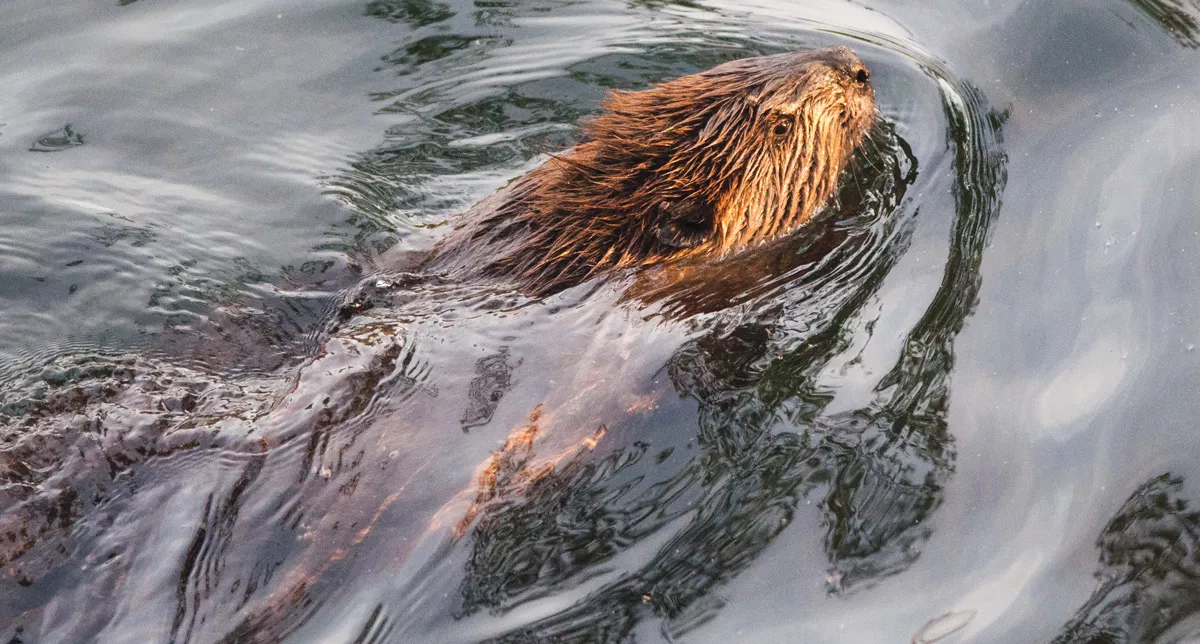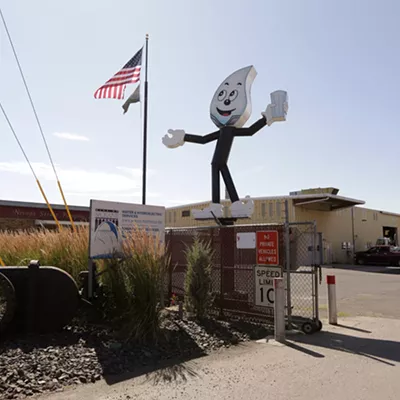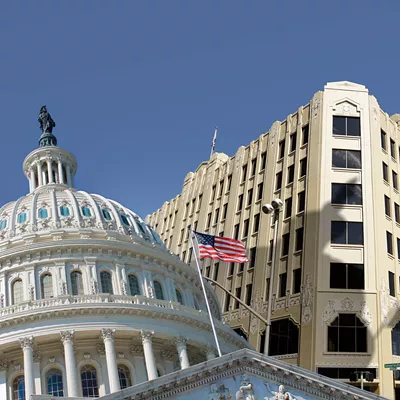
Wildlife signs can be subtle, even to an expert tracker. A few errant droppings of dried scat, a hint of a hoof-print, or the trampled brush.
But beavers? Beavers, oversized buck-toothed rodents that they are, are not known as subtle animals. Beavers don't just leave poop or prints. Beavers redraw maps. Beavers topple trees. Beavers raise rivers. Beavers build walls. Beavers change topography.
Still, as we walk through the trails of Turnbull National Wildlife Refuge on a crisp January morning, environmental journalist Ben Goldfarb knows that beaver signs go beyond gnawed tree stumps.
"That big hump of mud?" Goldfarb says. He points at a big hump of mud near the side of the trail that looks, to non-beaver-expert eyes, like, well, a big hump of mud.
"That's a scent mound," Goldfarb explains. "They wad it up with mud and leaves and sticks and whatnot. And they mark with scent secretions to claim their territory."
He is, after all, the talent behind the 2018 book Eager: The Surprising, Secret Life of Beavers and Why They Matter, all about how beneficial beavers are to both nature and humans.
Even before Goldfarb moved to Spokane, accompanying his wife when she took a nurse-midwife job shortly before his book was released, he was a fan of the bucktoothed creature.
"I was fishing in upstate New York," he recalls, "and had one swim between my legs."
At first, it was startling. But then the sense of wonder hit.
"It was spectacular," he says, "watching this animal glide past you in this beautiful, translucent water."
Still, Spokane, he says, is a near-perfect location for a journalist on the nature beat.
"You're central between the Rockies and the coast. I can go write a story about salmon in the morning and grizzly bears in the afternoon," Goldfarb says. "How many large cities have active wolf packs within driving distance?"
And there are, of course, plenty of beavers. They chomp at trees at the city's central Riverfront Park, diving into the Spokane River into the lodge next to the DoubleTree Hotel. One waddles up to the Auntie's Bookstore downtown, practically serving as a living advertisement for the Goldfarb books inside. Goldfarb recalls watching a couple lounging on the beach at Bowl and Pitcher campground of Riverside State Park when a beaver suddenly hauled itself out of the water and plopped itself down about 15 feet away from them.
"It was so funny to me. They were like what the f—- is that thing?" Goldfarb says. "They had no idea what it was. It was a really shocking moment."
Washington is a great state to be a beaver advocate, he says.
Credit Republican state Rep. Joel Kretz. Yes, on wolves, Kretz is considered an enemy of environmental activists, once telling the Seattle Times that a pro-wolf Washington State University researcher "ought to be drawn and quartered and a chunk of him left everywhere in the district."
But when it came to beavers, Kertz partnered with environmental groups like the Lands Council to develop a bill that encouraged trapping and relocating problematic beavers in Washington state instead of killing them.
"As a result, we have probably eight or 10 different nonprofits and tribes that are engaged in beaver restoration — probably more than any other state," Goldfarb says.
Writing for High Country News in Seattle in 2015, Goldfarb found himself at a beaver restoration workshop, full of biologists, activists and tribal members who thought the animal was just as incredible as he did. His articles showcasing his "proud love of the beaver" caught the eye of some folks at Chelsea Green Publishing, who pitched him on the idea of writing a book about beavers.
"They basically said 'Beavers: Go,'" Goldfarb says. "'Whatever you want to write about beavers, knock yourself out.'"
We don't find any beavers at Turnbull. The signs — including a few beaver-felled trees — are all at least a few months old. But that gives me time to pepper Goldfarb with a bunch of animal-fact questions, like I'm a 7-year-old visiting the zoo.
Do beavers gnaw on telephone poles? (Not generally — without the nutrient-rich bark, they lack much allure.) Wasn't there a giant prehistoric beaver? (Yep. It was the size of a black bear — basically like the beaver version of a hippo — but it didn't build dams.) Why do beavers have orange teeth? (Their teeth are fortified with iron to make chomping through trees easier.) Has a beaver ever killed a man? (Just once — a fisherman in Belarus took a selfie with a European beaver; the creature bit him in his femoral artery, and he bled out and died.)
"Just don't take selfies with beavers, and you'll be fine," he assures me.
Much of my knowledge of beavers, I admit, comes from the C.S. Lewis story, The Lion, the Witch and the Wardrobe, which portrays the beavers in the magical land of Narnia as capable of speaking British-accented English, a trait that seemed to diverge from the published science.
"They also 'eat fish,'" Goldfarb says, as if he's Neal DeGrasse Tyson debunking the physics of a Star Wars movie. "Highly inaccurate."
In fact, Goldfarb says, he'd raised the exact same objection while on his book tour in Britain. And, in a quintessentially British development, that comment got transformed into a culture-war story in the Daily Mail, the right-wing British tabloid. Their lengthy and sensationalized headline proclaimed: "Environmentalist blasts Chronicles of Narnia author C.S. Lewis for 'mis-educating' the public with Mr and Mrs Beaver's fish suppers because the animals actually only eat plants."
And yet, that trip also gave him one of his favorite experiences, when he gathered with a bunch of beaver fans in the Cornwall region of England to witness a sighting of the once nearly extinct European beaver.
"It was twilight. And we're all sitting around being silent ... And then the beavers emerged and were gliding across this pond," Goldfarb says. "It was incredible. People had tears in their eyes. Here was this part of their biological heritage that had been absent for so long and is now finally back."
You can get so familiar with an animal, that, at times you lose sight of their majesty. But a moment like that brings it all back.
"They're these enormous rodents with these bizarre paddle tails that, you know, cut down trees and build walls out of them," Goldfarb says. "For them, it was like seeing the Loch Ness Monster."

























